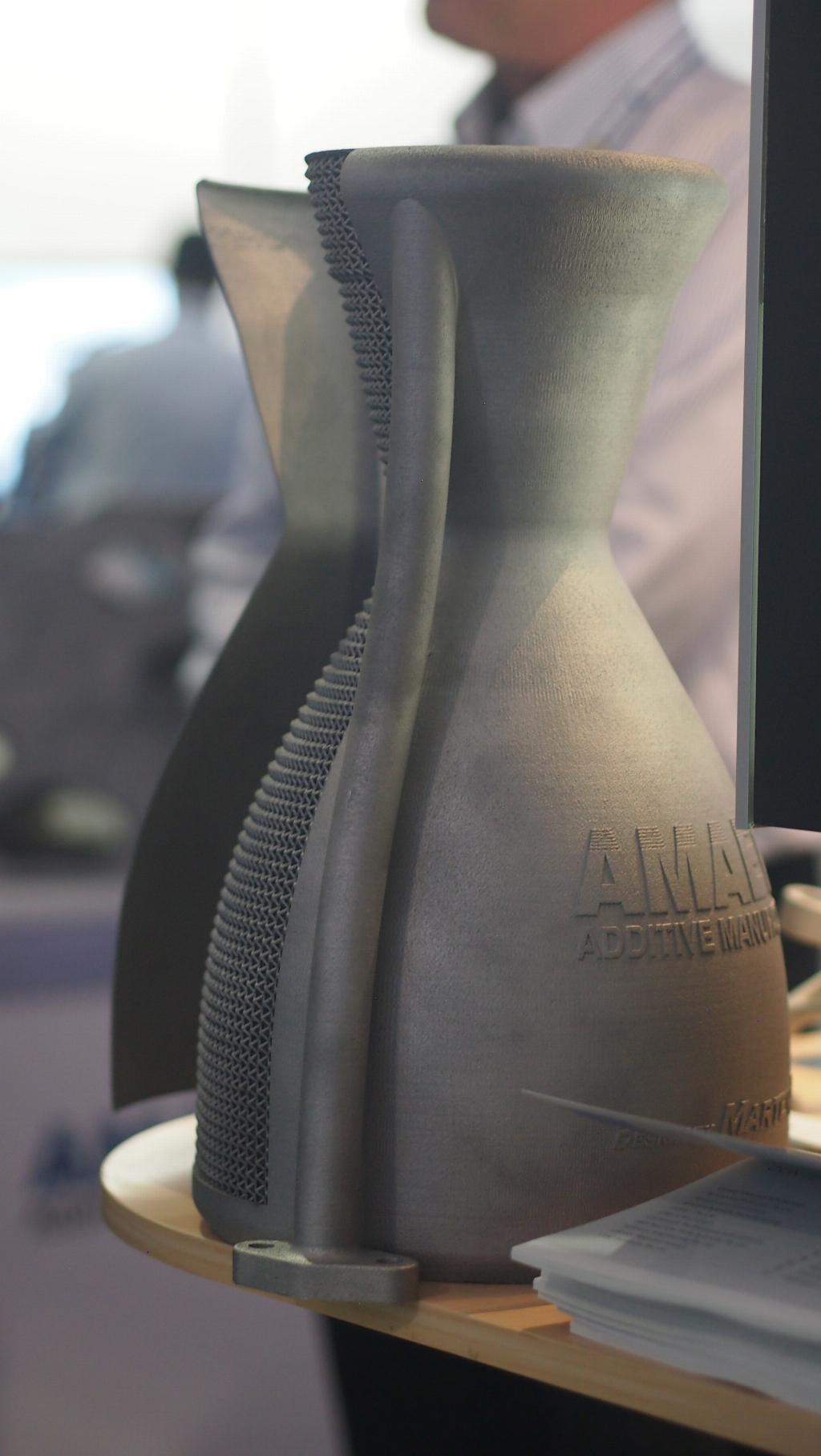Getting big in 3D

The biggest powder bed 3D printed metal aerospace component known to date is currently on display at the Melbourne International Airshow.
Monash University in Australia commissioned the world’s largest metal printer, and has used it to print a large door hinge from a Chinese jet airliner.
The aluminium hinge weighs 11kg and is 40 x 80 x 39cm in size. It is thought to be the largest powder bed 3D printed metal aerospace component made by the technology so far.
The $3.5million Xline 2000R printer acquired by Monash University is made by German manufacturer Concept Laser. One of five machines so far produced, it is the only one outside America and Europe, the only one based in a university and the only one in the Southern Hemisphere available for contract manufacturing.
“The new printer allows us to make large complex shapes and unique tools quicker, lighter and with less waste,” says Professor Xinhua Wu, who leads the Monash 3D printing initiative.
[caption id="attachment_10574" align="alignleft" width="160"] Barrie Finnin, CEO of Amaero[/caption]
Barrie Finnin, CEO of Amaero[/caption]
There are several types of 3D printing. The powder bed approach uses a laser moving across a base plate to fuse fine coatings of metal powder, one layer at a time, to gradually build an object.
Monash University and spin-off company Amaero Engineering demonstrated their expertise of additive manufacturing in metal at the 2015 Airshow when they presented the world’s first printed jet engine – a Safran gas turbine power unit from a Falcon executive jet.
Since then, Amaero has operated as the commercial arm of the 3D printing initiative.
“This new printer creates promising opportunities for advanced manufacturing in Australia for global markets,” says Amaero CEO Barrie Finnin.
“Last year, we printed production components that are now flying in passenger jets and small turbojet engines. Our technology is also now operating in our manufacturing facility in Toulouse with our partner Safran—the French-based global aerospace and defence company.”

“Now we can literally go bigger. This new capability will be of great interest to our aerospace and automotive customers in Europe, North America, Asia and Australia,” Finnin says.
The Amaero team are presenting a range of printed components for inspection on their stand at the Melbourne Airshow, including: the 3D printed jet engine power unit; the large jetliner door hinge; a large, complex air intake component and a cut away view of a new rocket motor design.
The development and commercialisation of this advanced 3D metal printing technology has been supported by Monash University; Safran; and the Australian Government through the Entrepreneur’s Programme; the ARC; and other agencies. CSIRO and Deakin University were also participants in the original engine printing project supported by SIEF, which continues to provide valuable data and software tools.













